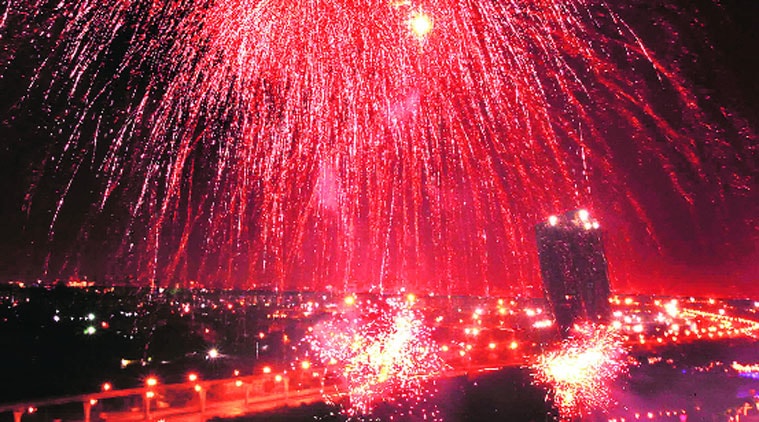Pune: Cracker test shows noise levels within limits, but officials say air quality remains a worry
MPCB conducts a decibel test for fire crackers every year as part of its pre-Diwali exercise. This year, different types of fire crackers were tested at 12 different sites in the state, including in Pune.
 Fire crackers like standard bomb, whistling racket, standard thunder ball, sutli bomb and others were tested as part of the exercise.
Fire crackers like standard bomb, whistling racket, standard thunder ball, sutli bomb and others were tested as part of the exercise.Ahead of Diwali, a decibel test of around 25 types of crackers from different manufacturers carried out by the Maharashtra Pollution Control Board (MPCB) has found that though their noise levels are generally within permissible limits, same care has not been taken by them about the air pollution.
MPCB conducts a decibel test for fire crackers every year as part of its pre-Diwali exercise. This year, different types of fire crackers were tested at 12 different sites in the state, including in Pune.
Fire crackers like standard bomb, whistling racket, standard thunder ball, sutli bomb and others were tested as part of the exercise.
[related-post]
The noise standards for fire-crackers, notified by the Environment (Protection) Rules, 2006, state that the manufacture, sale and use of fire-crackers generating noise level exceeding 125 decibels at a distance of four metres from the point of bursting is prohibited.
MPCB officials said they were preparing a report after which manufacturers of fire crackers which have exceeded the limits would be informed. They conceded there was a need for creating more awareness about both noise and air pollution.
Meanwhile, Dr Gufran Beig, director of System for Air Quality Forecasting and Research (SAFAR) said they would predict the quality of air for the four main Diwali days by the weekend. “Our experience has been that air quality has always dipped during Diwali days due to bursting of fire crackers,” Beig said. SAFAR monitors and predicts air quality of 10 locations in Pune using advanced techniques as per WMO (World Meteorological Organisation) guidelines. “By the weekend, SAFAR scientists will be able predict the air quality in Pune, Mumbai and New Delhi,” Beig said.







